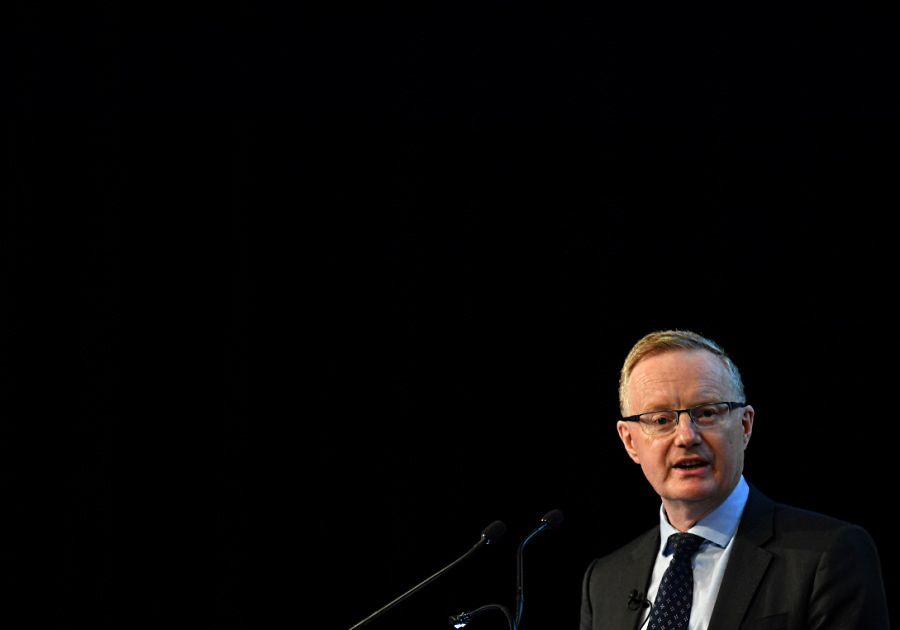
Covid a 'heavy burden' for the young and poorly paid, and also RBA governor, Philip Lowe. (AAPIMAGE)
The Reserve Bank anticipates “a further significant expansion of our balance sheet” and “larger increases [as] have occurred in other countries,” is on the horizon, as the central bank ponders how best to tackle unemployment and stir inflation.
A speech by RBA governor Philip Lowe yesterday elaborated “three of the many issues we [the RBA board] are working through.
The first: the degree of traction any further monetary easing “might get in terms of better economic outcomes.
“When the pandemic was at its worst and there were severe restrictions on activity we judged that there was little to be gained from further monetary easing,” Lowe told an investment conference sponsored by Citi.
“The solutions to the problems the country faced [at the time] lay elsewhere. As the economy opens up, though, it is reasonable to expect that further monetary easing would get more traction than was the case earlier.
The second issue: the effect of any further monetary easing on financial stability and longer-term macroeconomic stability.
High-impact negotiation
masterclass
July 9 & 16, 2025
5:00pm - 8:30pm
This high-impact negotiation masterclass teaches practical strategies to help you succeed in challenging negotiations.
“To the extent that an easing of monetary policy helps people get jobs it will help private sector balance sheets and lessen the number of problem loans,” Lowe argued.
“In so doing, [monetary easing] can reduce financial stability risks. This benefit needs to be weighed against any additional risks as people take more investment risk in the search for yield. We also need to take into account the effect of low interest rates on people who rely on interest income.
Then Lowe’s third and final issue - international trends in monetary policy - provided the framework for the social justice message in his speech.
“In the past, interest differentials provided a reasonable gauge to the relative stance of monetary policy across countries,” Lowe said.
But, “today, things are not so straightforward, with monetary policy also working through balance sheet expansion.
“As I noted earlier, our balance sheet has increased [threefold, to more than A$300 billion] since March, but larger increases have occurred in other countries.
“We are considering the implications of this as we work through our own options.”
Most of the recent (and anticipated) expansion in the RBA balance sheet is a function of the Term Funding Facility, a scheme with languid takeup until the scheme an overhauled this month.
The backdrop to the speech was Lowe’s clear-cut language around unemployment and full employment, the ever closer focus on which has become a defining difference of Lowe’s tenure as RBA governor.
Yesterday’s monthly ABS labour force data shows hours worked have decreased by 5.0 per cent over the year, thanks to Covid, with the underemployment rate at 11.4 per cent (3 percentage points higher than a year ago) and an underutilisation rate of 18.3 per cent.
Lowe highlighted a couple of trends in labour force and incomes data that emphasise the 2020 recession is a shocker, as far equality and inequality goes.
In pandemic Australia, the decline in employment "has been largest for occupations with the lowest hourly earnings, while employment has actually increased for occupations with the highest hourly earnings," Lowe pointed out.
"The difference in experience is striking."
Over recent months, the RBA governor reminded the market, “our communication has stated that the RBA will ‘not increase the cash rate target until progress is being made towards full employment and it is confident that inflation will be sustainably within the 2 to 3 per cent target band’,” Lowe said.
“In terms of unemployment, we want to see more than just ‘progress towards full employment’. The RBA board views addressing the high rate of unemployment as an important national priority. Consistent with our mandate, we want to do what we can do, with the tools we have, to ensure that people have jobs.
“We want to see a return to labour market conditions that are consistent with inflation being sustainably within the 2 to 3 per cent target range,” Lowe said.
“The RBA will not be increasing the cash rate until actual inflation is sustainably within the target range. It is not enough for inflation to be forecast to be in the target range. While inflation can move up and down for a range of temporary reasons, achieving inflation consistent with the target is likely to require a return to a tight labour market.
“On our current outlook for the economy – which we will update in early November – this is still some years away. So we do not expect to be increasing the cash rate for at least three years.”